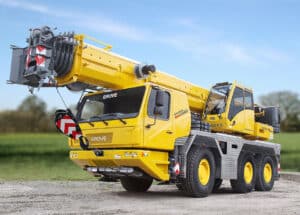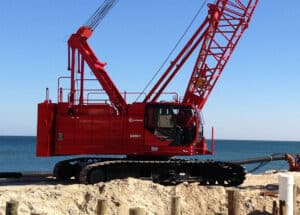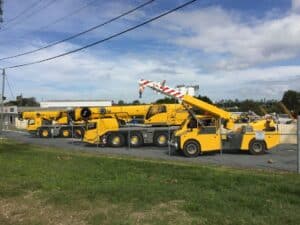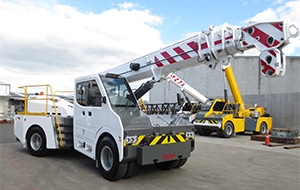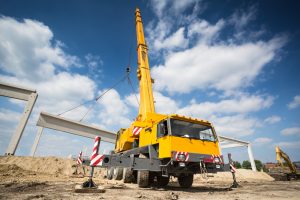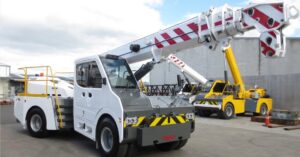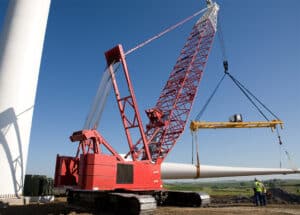WorkSafe Australia’s Rules on 10-Year Crane Inspections – What You Need to Know
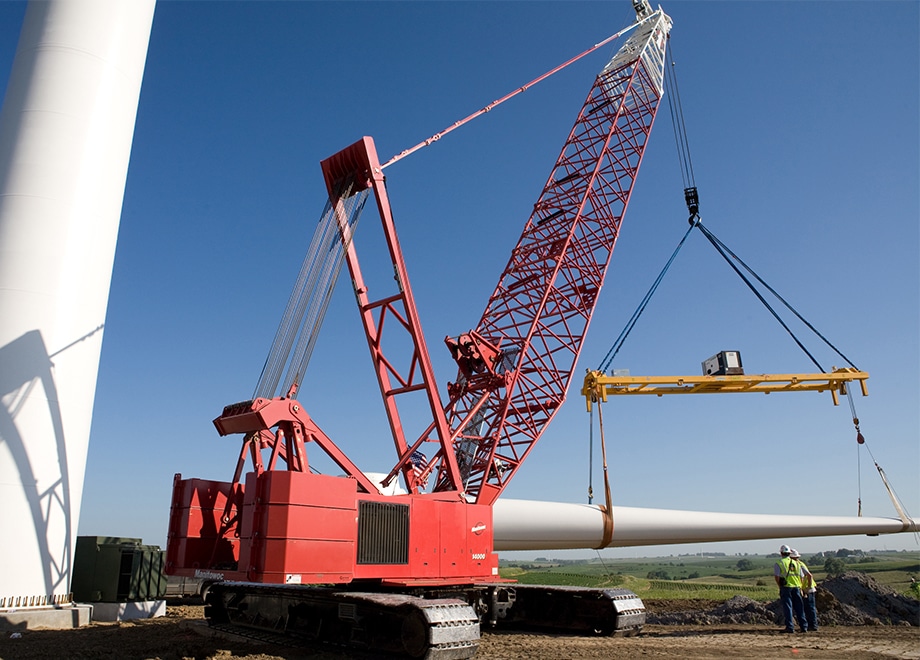
Cranes are integral to many industries, including construction, manufacturing, logistics, and mining. They handle heavy loads, operate in challenging environments, and are subject to extreme forces, making regular inspections essential to ensure safety, compliance, and operational efficiency.
In Australia, WorkSafe mandates a rigorous 10-year crane inspection process to assess structural integrity, mechanical reliability, and overall safety. This requirement is part of the country’s stringent workplace safety laws, designed to protect workers and prevent catastrophic crane failures that could lead to injuries, fatalities, and extensive financial losses.
Non-compliance with these inspections can result in severe consequences. Businesses that fail to conduct a 10-year crane inspection may face hefty fines, work stoppages, and legal liabilities. Furthermore, using an uninspected crane poses risks to personnel, equipment, and property, potentially leading to accidents that could have been prevented with proper assessment.
Understanding the WorkSafe Australia requirements, the inspection process, and how to stay compliant is crucial for businesses relying on crane operations. This article explores everything you need to know about 10-year crane inspections, including their purpose, regulatory framework, inspection procedures, and compliance strategies.
What Is a 10-Year Crane Inspection?
A 10-year crane inspection is a mandatory, comprehensive assessment designed to evaluate a crane’s condition after a decade of operation. This type of inspection, often referred to as a major inspection, is governed by Australian Standard AS 2550.1, which outlines the maintenance and safe use of cranes.
Unlike routine maintenance checks or annual inspections, which primarily focus on functional components and minor wear, a 10-year inspection delves deeply into the crane’s structural integrity, critical load-bearing components, and safety mechanisms.
During this assessment, an inspector conducts detailed evaluations using non-destructive testing (NDT) methods to detect hidden structural weaknesses, corrosion, and fatigue-related issues. They also assess the crane’s mechanical and electrical systems to ensure continued operational safety. Because cranes undergo significant stress over time, a decade of continuous use can result in unseen deterioration that could compromise their reliability. Therefore, a 10-year inspection is essential in determining whether a crane can continue safe operation, requires major repairs, or should be decommissioned.
WorkSafe Australia’s Regulations on 10-Year Crane Inspections
The Work Health and Safety (WHS) Act 2011 serves as the foundation for crane safety regulations in Australia. WorkSafe Australia, alongside state-level regulators such as Safe Work NSW, WorkSafe Victoria, and WorkSafe Queensland, enforces compliance with crane inspection laws to ensure the safe operation of lifting equipment.
Several key standards guide the requirements for 10-year inspections:
- AS 2550.1: Safe Use of Cranes – Establishes maintenance, inspection, and operational guidelines.
- AS 1418: Design and Construction of Cranes – Defines engineering and manufacturing standards.
- WHS Act & WHS Regulations – Mandates employer responsibilities for crane safety and compliance.
Each Australian state may implement additional requirements, so businesses must verify specific obligations with their local WorkSafe authority. However, all jurisdictions align with the fundamental principle that cranes must undergo a major inspection at the 10-year mark to ensure they remain structurally sound and safe for continued operation.
Who Needs to Conduct a 10-Year Crane Inspection?
A 10-year crane inspection cannot be performed by just any technician or maintenance personnel. WorkSafe Australia requires that only qualified engineers, accredited crane inspectors, or WorkSafe-approved assessors conduct these inspections. These professionals must possess extensive experience in crane engineering, mechanical systems, and structural assessments.
Businesses can choose between hiring a third-party independent assessor or utilizing in-house engineers if they meet WorkSafe’s accreditation requirements. Independent inspectors offer an objective assessment, reducing the risk of overlooked defects. After the inspection, the crane must receive a certificate of compliance, and detailed records must be maintained for regulatory verification.
What Does a 10-Year Crane Inspection Cover?
A 10-year inspection is an exhaustive process that evaluates all critical components of a crane. The inspection includes:
- Structural Integrity Checks – Identifies cracks, corrosion, fatigue, and deformation in beams, booms, and supports.
- Load-Bearing Components – Examines wire ropes, pulleys, hooks, and chains for wear and potential failure points.
- Hydraulic and Electrical Systems – Assesses motors, fluid leaks, hoses, control circuits, and power connections.
- Mechanical Wear and Tear – Inspects brakes, gearboxes, bearings, and rotation mechanisms.
- Non-Destructive Testing (NDT) – Uses ultrasonic, magnetic particle, and dye penetrant testing to detect internal damage.
- Operational Safety Tests – Confirms emergency stops, overload protection, limit switches, and other safety devices are functional.
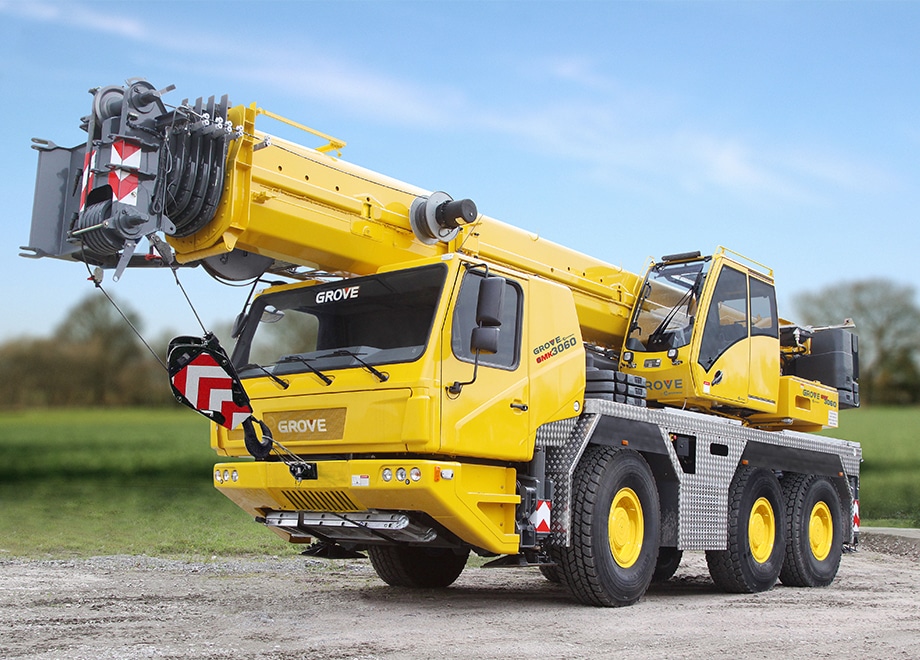
How to Prepare for a 10-Year Crane Inspection
To ensure a smooth and successful inspection, businesses should follow these preparatory steps:
- Review Maintenance Records – Ensure all previous maintenance logs and repair history are up to date.
- Conduct a Pre-Inspection Assessment – Identify and address minor issues before the formal inspection.
- Gather Documentation – Ensure all necessary paperwork, including registration, servicing records, and compliance certificates, are ready.
- Schedule Downtime Strategically – Plan the inspection during low-activity periods to minimise operational disruptions.
- Book a Qualified Inspector in Advance – Avoid last-minute scheduling delays by securing a WorkSafe-certified inspector well ahead of time.
Consequences of Non-Compliance
Failure to comply with WorkSafe Australia’s 10-year crane inspection requirements can have serious repercussions. WorkSafe may issue an improvement or prohibition notice, halting crane operations until necessary repairs and certifications are completed. Businesses may also face financial penalties, operational downtime, and increased insurance costs. In extreme cases, accidents resulting from neglected inspections could lead to legal action, workplace injuries, or fatalities.
For example, several past crane collapses in Australia have been attributed to mechanical failure due to improper maintenance. Such incidents highlight the importance of adhering to inspection mandates to ensure workplace safety.
Costs and Timeframe for a 10-Year Crane Inspection
The cost of a 10-year crane inspection varies depending on factors such as:
- Crane Type – Mobile, tower, gantry, or overhead cranes have different inspection complexities.
- Extent of Repairs – Minor refurbishments cost less, while major structural replacements increase expenses.
- Inspection Provider – Independent third-party assessors may charge more than in-house teams.
The process can take anywhere from a few days to several weeks, depending on findings and required repairs. Businesses should account for potential downtime when scheduling inspections.
Key Takeaways: Staying Compliant and Safe
Conducting a 10-year crane inspection is not just a regulatory requirement but a crucial step in ensuring workplace safety and equipment longevity. By following WorkSafe Australia’s guidelines, businesses can avoid costly penalties, prevent accidents, and maintain operational efficiency. Scheduling inspections proactively and addressing maintenance issues early can help minimise downtime and unexpected costs.
Call to Action
To ensure compliance, businesses should check their crane inspection schedules and engage a WorkSafe-certified inspector. For more information, visit WorkSafe Australia’s official crane safety guidelines or consult a professional crane inspection service to ensure your lifting equipment remains in top condition.
